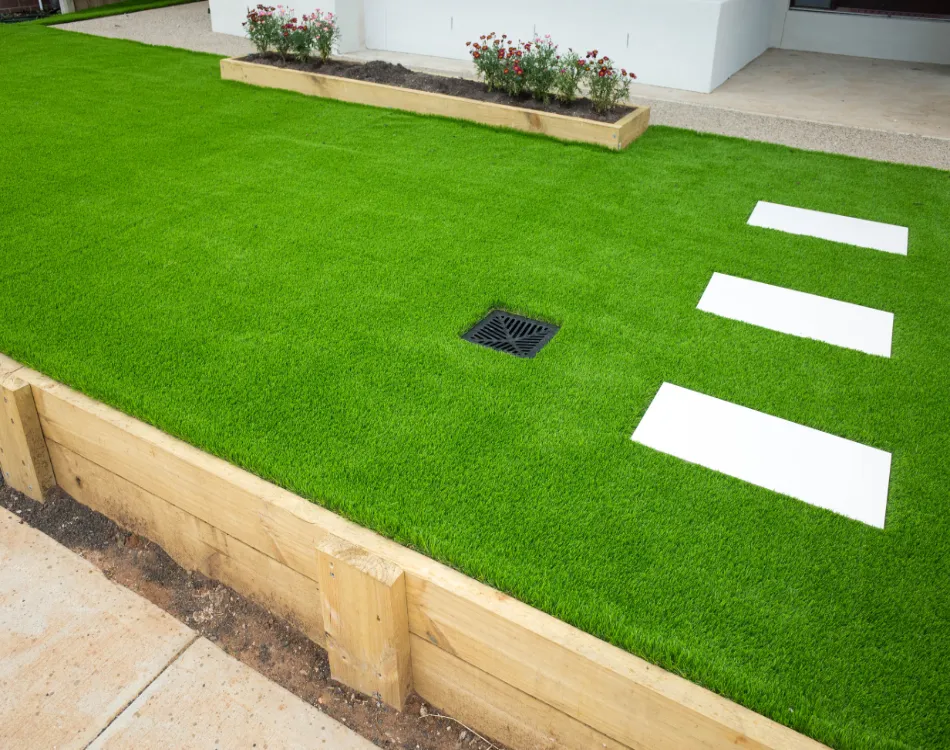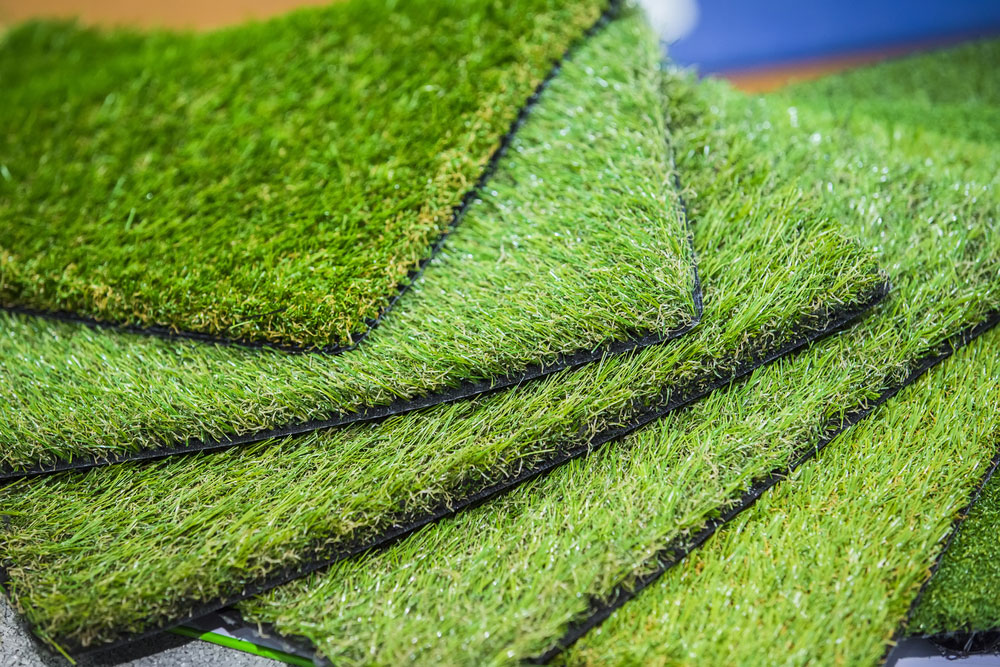Discover Reputable Artificial Turf Companies Phoenix for Your Outdoor Needs
Discover Reputable Artificial Turf Companies Phoenix for Your Outdoor Needs
Blog Article
See Why Homeowners Prefer Artificial Grass for Sustainable Landscape Design Practices
As homeowners increasingly focus on sustainability in landscaping, synthetic grass has actually emerged as a compelling option to conventional turf. Its ability to save water, decrease upkeep initiatives, and lessen environmental effect positions it as a functional selection for those looking for eco-friendly services. The aesthetic allure and adaptability of synthetic lawn provide to diverse style preferences. The effects of this shift prolong beyond plain ease and aesthetics, triggering a better examination of just how these options affect wider ecological end results. What continues to be to be explored is the full extent of advantages that synthetic grass can supply to house owners and the setting alike.
Water Preservation Perks
One of the most considerable benefits of artificial lawn is its function in water conservation. In contrast, synthetic turf removes this need entirely, as it does not need irrigation.
Additionally, the setup of fabricated turf can add to an extra sustainable landscape. Homeowners can significantly reduce their water bills, enabling for reallocation of sources to other ecological efforts or home usages. Furthermore, synthetic grass is created to endure numerous weather conditions without the requirement for additional watering, making it an ideal selection for regions dealing with water shortage.
The environmental advantages expand past immediate water financial savings. By decreasing water consumption, man-made grass aids to mitigate the influences of climate adjustment, preserving essential environments that are threatened by too much water removal. As lasting landscape design techniques gain traction, synthetic lawn arises as an accountable option for homeowners looking for to produce green exterior rooms.
Minimized Upkeep Efforts
Synthetic grass substantially decreases upkeep initiatives compared to standard turf yards. With synthetic grass, homeowners can remove the taxing tasks related to natural landscape design, such as mowing, feeding, and weeding. This not only saves valuable time yet likewise reduces physical labor, making grass treatment available for people of any ages.
Among the most remarkable advantages is the lack of normal mowing. Traditional lawns call for regular trimming to preserve a cosmetically pleasing elevation, whereas synthetic grass continues to be consistently lush without the need for cutting. In addition, homeowners no longer require to apply pesticides or plant foods, which are usually needed to keep all-natural lawn healthy. This change not just lightens the work but additionally advertises a neater, extra uniform appearance year-round.
In addition, synthetic grass is durable and sturdy, requiring marginal maintenance beyond periodic cleaning and washing to remove particles. This ease of maintenance permits house owners to enjoy their outdoor spaces without the consistent fear of upkeep, giving even more time for recreation and household activities. Ultimately, the minimized upkeep initiatives linked with synthetic grass make it an appealing alternative for those looking for a low-maintenance, aesthetically appealing landscape.

Ecological Impact Reduction
There is a growing acknowledgment of the ecological advantages linked with fabricated lawn, particularly in terms of water preservation and minimized chemical usage. Conventional grass require substantial amounts of water, particularly in drought-prone areas, bring about boosted strain on neighborhood water sources. On the other hand, artificial lawn gets rid of the demand for watering, significantly reducing water usage and promoting sustainability.
In addition, conventional grass upkeep typically entails the application of pesticides, herbicides, and plant foods, which can contribute to soil and water contamination. Synthetic grass reduces this environmental threat by needing very little upkeep and virtually removing the requirement for damaging chemicals. This not just boosts dirt health and wellness but likewise safeguards regional ecological communities from harmful runoff.
Furthermore, the production of natural turf lawns normally involves the usage of nonrenewable fuel sources for mowing and landscaping equipment, further contributing to greenhouse gas emissions. By selecting artificial lawn, homeowners can substantially decrease their carbon footprint connected with yard treatment activities.
Visual Charm and Flexibility
In addition to its ecological advantages, synthetic lawn supplies significant visual allure and convenience for landscape design. Property owners can attain a rich, eco-friendly appearance year-round, eliminating the seasonal fluctuations generally connected with natural lawn. This consistent aesthetic not just enhances the aesthetic allure of a residential or commercial property yet also adds to a sleek and well-maintained appearance.
Moreover, synthetic grass is offered in a selection of textures, styles, and colors, enabling customization to match individual preferences and style motifs - this post Arizona turf. Whether used in household yards, industrial areas, or recreational locations, it can flawlessly incorporate right into diverse landscape design designs, from contemporary minimalist to rich exotic setups
The adaptability of fabricated grass extends past mere look; it can be mounted in different places, consisting of he has a good point rooftops, patios, and also interior rooms, creating chances for distinct landscape design options. Additionally, it appropriates for a series of activities, from youngsters's play areas to pet-friendly environments, supplying performance without jeopardizing design.
Ultimately, the visual appeal and convenience of synthetic grass make it an appealing option for property owners seeking lasting landscape design remedies that do not compromise charm for environmental obligation.

Long-Term Expense Financial Savings
One of the most engaging advantages of man-made lawn is its potential for long-term cost financial savings. Unlike natural yard, which requires routine maintenance-- consisting of mowing, watering, feeding, and insect control-- man-made lawn dramatically lowers these recurring costs.
Furthermore, synthetic grass has a life-span of 15 to 25 years, depending on its top quality and usage. This durability decreases replacement costs, making it a much more affordable choice in the future. Moreover, the initial investment in synthetic grass can often be recovered via the savings accumulated with time.
While the upfront price may appear higher compared to sod setup, the cumulative savings from minimized upkeep and water usage typically exceed these first expenditures. Inevitably, the fostering of man-made grass not just promotes a lasting landscape design service however additionally provides property owners an economically savvy choice that lines up with long-term budgeting goals.
Conclusion
Artificial grass arises as an engaging option for lasting landscaping, supplying considerable advantages in water preservation, minimized maintenance efforts, and lessened environmental impact. As neighborhoods increasingly prioritize eco friendly practices, the fostering of synthetic grass stands for a dynamic step toward achieving resilient and lasting landscapes.
Additionally, fabricated lawn is designed to endure different climatic conditions without the requirement for extra watering, making it an excellent option for regions encountering water scarcity. (Arizona artificial turf)

Man-made turf arises as an engaging choice for sustainable landscaping, providing significant advantages in water preservation, reduced maintenance efforts, and reduced ecological effect.
Report this page